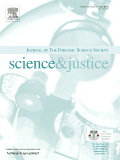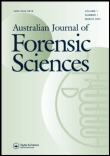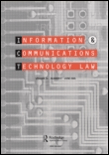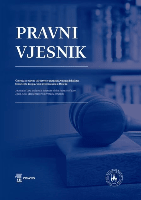
Journal of Digital Forensics Security and Law
Scope & Guideline
Bridging the Gap Between Forensics and Legal Frameworks.
Introduction
Aims and Scopes
- Digital Forensics Methodologies:
The journal emphasizes the development and evaluation of new methodologies for digital forensics, including software tools and analytical frameworks that improve the accuracy and efficiency of forensic investigations. - Legal Frameworks and Ethical Considerations:
It explores the intersection of digital forensics with legal standards and ethical issues, examining how digital evidence is treated within different legal jurisdictions and the implications for privacy and security. - Emerging Technologies in Forensics:
The journal focuses on the impact of emerging technologies, such as artificial intelligence, machine learning, and IoT, on digital forensics, investigating how these advancements can be integrated into forensic practices. - Collaborative Tools for Digital Investigations:
Research on collaborative tools and methodologies for digital investigations, especially in complex cases involving multiple stakeholders, is a key area of focus. - Security Threats and Vulnerabilities:
The journal addresses current and emerging security threats that impact digital forensics, including malware, phishing attacks, and vulnerabilities in hardware and software.
Trending and Emerging
- Machine Learning Applications in Forensics:
There is an increasing focus on the application of machine learning techniques in digital forensics, particularly in areas such as image analysis and automated evidence triage, highlighting the potential for AI to transform forensic methodologies. - Forensic Readiness and Preparedness:
Emerging research on digital forensic readiness frameworks, particularly in relation to BYOD (Bring Your Own Device) policies, emphasizes the need for organizations to be proactive in preparing for potential digital investigations. - Impact of IoT on Forensic Investigations:
The integration of IoT devices in forensic investigations is gaining traction, with a focus on understanding the unique challenges and methodologies required to effectively investigate incidents involving interconnected devices. - Cross-Border Digital Evidence Collection:
Research exploring the complexities of cross-border collection of digital evidence is trending, as globalization increases the need for standardized practices and legal cooperation among jurisdictions. - Collaborative Digital Investigation Tools:
The development of collaborative tools for digital investigations, especially in relation to dark web content and shared investigations, is an emerging theme that reflects the need for cooperation among investigators.
Declining or Waning
- Traditional Digital Forensics Techniques:
There is a noticeable decline in publications focused solely on traditional digital forensics techniques, such as basic data recovery and analysis, as the field evolves to incorporate more advanced and integrated approaches. - Legal Case Studies:
Research centered on case studies of legal proceedings involving digital evidence has decreased, possibly due to the growing emphasis on theoretical frameworks and technological advancements rather than specific legal outcomes. - General Cybersecurity Practices:
Topics that broadly cover cybersecurity practices without a specific focus on digital forensics, such as general antivirus solutions, are less frequently addressed, indicating a shift towards more specialized discussions within the journal.
Similar Journals

International Journal of Cyber Criminology
Connecting scholars to combat cyber threats effectively.International Journal of Cyber Criminology is a premier open-access journal dedicated to advancing the field of cyber criminology, publishing cutting-edge research that addresses the intricate relationship between technology and crime. Established in 2007 and published under the esteemed guidance of K Jaishankar, this journal serves as a fundamental resource for researchers, professionals, and students engaged in the study of cybercrime, online security, and digital justice. With an impressive ranking in the Q2 quartile in Law and a notable 81st percentile in Scopus Ranks, it reflects its commitment to high-quality scholarship and impact within the academic community. The journal aims to foster interdisciplinary dialogue and innovative solutions to contemporary cybercrime challenges while supporting free access to knowledge. Hailing from Manonmaniam Sundaranar University in Tamil Nadu, India, the International Journal of Cyber Criminology exemplifies a global perspective on issues affecting society in the digital age, making it an essential publication for those seeking to understand and combat cyber threats.

SCIENCE & JUSTICE
Unraveling Truth at the Intersection of Science and Law.Science & Justice is a leading international journal published by Elsevier Science Ltd, dedicated to the interdisciplinary examination of the intersection of justice and science, especially within the realms of forensic science and pathology. Established in 1995, this reputable journal has garnered a commendable Q2 rank in the category of Pathology and Forensic Medicine, reflecting its significant contributions to advancing knowledge in these critical fields. With an ISSN of 1355-0306 and an E-ISSN of 1876-4452, the journal is indexed in Scopus, positioning it in the top 68th percentile among its peers. The objectives of Science & Justice include promoting research that bridges scientific methodologies with justice-related applications, making it an invaluable resource for researchers, professionals, and students alike. As the journal continues to evolve, it aims to interface scientific innovations with forensic practices, thereby enhancing the integrity of justice processes globally. Despite not offering Open Access options, it remains a pivotal reference point within the academic community focused on forensic science methodologies and their legal implications.

INDIANA LAW JOURNAL
Inspiring Thoughtful Legal Analysis and DebateINDIANA LAW JOURNAL, a premier publication in the field of law, serves as a vital platform for scholarly discourse and legal scholarship. Established in 1973 and originating from the Indiana University School of Law in Bloomington, this esteemed journal publishes a diverse range of articles, essays, and commentary from both established and emerging legal scholars. With an impressive Scopus Rank of #350 out of 1025 in the Social Sciences domain, placing it in the 65th percentile, the journal is recognized for its contributions to the legal academic community. Its 2023 category quartile ranking of Q2 underscores its significance and relevance, ensuring that published works are widely acknowledged and cited. Although not an open access journal, the INDIANA LAW JOURNAL is committed to fostering robust academic exchanges and enhancing understanding in various legal fields, making it an indispensable resource for researchers, professionals, and students alike. With a history of convergence in publication timelines, it continues to evolve in response to the continually changing legal landscape.

International Journal of Electronic Security and Digital Forensics
Illuminating the path to robust electronic security practices.The International Journal of Electronic Security and Digital Forensics, published by INDERSCIENCE ENTERPRISES LTD, is a leading platform for disseminating scholarly research in the realms of cybersecurity, digital forensics, and electronic security. Established with the objective of bridging the gap between theoretical advancements and practical applications, the journal spans critical areas such as network security, legal implications of digital forensics, and reliability in safety measures. With its ISSN 1751-911X and E-ISSN 1751-9128, the journal aims to provide valuable insights into emerging technologies and methodologies while maintaining high academic standards, as reflected in its diverse quartile rankings across multiple categories in 2023. Operating from the United Kingdom and catering to a global audience, the journal is committed to fostering innovative research that contributes to safer digital environments. Researchers, professionals, and students will find a wealth of information and opportunities for collaboration in this specialized field, making International Journal of Electronic Security and Digital Forensics an essential resource for advancing knowledge and practice.

Law Technology and Humans
Fostering Collaboration in Law, Technology, and HumanityLaw Technology and Humans is an innovative open-access journal published by Queensland University of Technology in Australia. Since its inception in 2019, it has emerged as a vital platform for scholarly discourse at the intersection of law, technology, and society, addressing pertinent challenges and advancements from 2019 to 2024. With categories spanning from Law and Social Sciences to Biotechnology and Information Systems, the journal caters to a diverse audience, achieving respectable rankings within its field—ranked #382 in Social Sciences (Law) and within the 62nd percentile in 2023. As a practitioner or researcher navigating the rapidly evolving landscape of tech law, Law Technology and Humans serves as an essential resource, fostering interdisciplinary collaboration and providing critical insights into the implications of technological innovation. By maintaining an open-access format, the journal enhances accessibility, promoting widespread engagement and knowledge sharing among academics, professionals, and students globally.

Australian Journal of Forensic Sciences
Connecting Researchers to the Heart of Forensic InnovationThe Australian Journal of Forensic Sciences, published by Taylor & Francis Ltd, stands as a pivotal resource in the field of forensic medicine and pathology. With an ISSN of 0045-0618 and an E-ISSN of 1834-562X, this esteemed journal has been at the forefront of forensic research since its inception in 1968. Currently classified in the Q2 category for the year 2023 within its domain, it ranks 92nd out of 208 journals, placing it within the 55th percentile in Scopus rankings. The journal's scope encompasses a diverse range of topics critical to the advancement of forensic sciences, making it an essential platform for researchers, professionals, and students seeking to stay abreast of the latest developments and methodologies in the field. Although not an open-access publication, the journal serves as a crucial conduit for disseminating high-quality research, contributing significantly to the ongoing evolution of forensic practice and knowledge.

Pravo-Zhurnal Vysshei Shkoly Ekonomiki
Advancing Legal Scholarship in Higher EducationPravo-Zhurnal Vysshei Shkoly Ekonomiki is a distinguished open-access journal published by the National Research University Higher School of Economics, located in Moscow, Russia. With its ISSN 2072-8166, the journal aims to provide a rigorous platform for scholarly communication in the fields of law and higher education studies, reflecting on contemporary legal practices and educational methodologies. Since adopting an open-access model in 2020, it has significantly increased its accessibility, allowing researchers, professionals, and students worldwide to engage with cutting-edge research without financial barriers. The journal is committed to advancing discussions that bridge law and education, making it an essential resource for those seeking to deepen their understanding of these intersecting fields.

Information & Communications Technology Law
Bridging Law and Innovation for a Digital TomorrowInformation & Communications Technology Law, an esteemed journal published by Routledge Journals, Taylor & Francis Ltd, serves as a vital platform for the dissemination of critical research and analysis in the intersecting fields of law, communication, and computer science. Established in 1992, this journal has continuously evolved to address the dynamic landscape of information technology and its legal implications, maintaining a significant H-Index that reflects its scholarly impact. With a notable impact factor that places it in the second quartile for communication and law disciplines, and in the third quartile for computer science applications as of 2023, it ranks impressively within the Scopus Metrics—highlighting its relevance and reach among global academia. Covering vital topics from data privacy to intellectual property rights in the digital age, the journal appeals to researchers, practitioners, and students alike by offering insightful articles that explore contemporary issues and emerging trends within ICT law. Although it does not currently offer open access options, its comprehensive articles and reviews are indispensable for anyone seeking to understand the complexities of technology regulation and legal frameworks.

Vestnik Permskogo Universiteta-Juridicheskie Nauki
Unlocking Insights in Jurisprudence and LawVestnik Permskogo Universiteta-Juridicheskie Nauki, published by the Perm State National Research University, serves as a prominent platform for the dissemination of legal scholarship since its inception. With an Open Access policy implemented in 2009, this journal offers a wide range of legal studies, including comparative law, constitutional law, and international law, making it an essential resource for researchers, academics, and practitioners in the field. Although it is a relatively young publication, its commitment to quality and accessibility has established it as a respected voice in jurisprudence, contributing significantly to both national and international legal discourse. Researchers and students alike will find valuable insights within its pages, encompassing the latest developments and theoretical advancements within Russian and global legal systems. For those looking to stay informed on current legal issues and academic debates, this journal is a must-read.

Pravni Vjesnik
Empowering Legal Scholarship, Open to All.Pravni Vjesnik is a peer-reviewed academic journal published by the Pravni Fakultet Sveučilišta Josipa Jurja Strossmayera & Osijek, primarily focusing on the field of law within the social sciences. Since transitioning to an Open Access model in 2016, the journal has broadened its accessibility, allowing researchers, professionals, and students to engage with diverse legal scholarship without subscription barriers. With an ISSN of 0352-5317 and an E-ISSN of 1849-0840, Pravni Vjesnik plays a crucial role in disseminating knowledge and fostering discourse in the legal community, particularly within the context of the Croatian legal system and broader European legal frameworks. Although it holds a rank of #760 out of 1025 in the Scopus database, placing it in the 25th percentile of law journals, its commitment to quality and relevance ensures its importance as a resource for rigorous academic inquiry. The journal's scope is anticipated to expand from 2019 to 2024, promoting ongoing research in contemporary legal issues. This dedication to publishing comprehensive and impactful studies makes Pravni Vjesnik an essential platform for those involved in the legal field.